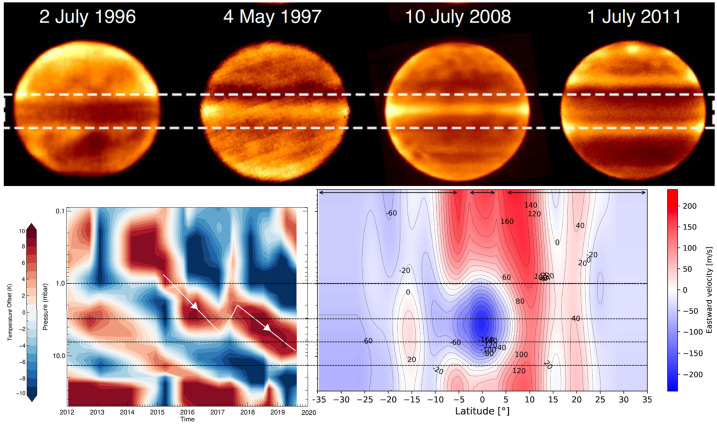Fig. 7.
Jupiter’s stratospheric equatorial oscillation was initially discovered from thermal infrared observations similar to those shown in the upper panel (adapted from Antuñano et al. 2021). It is characterised by vertically alternating temperature extrema that descend with time. At a given pressure level (the 3, 6.4, and 13.5 mbar levels are indicated with horizontal dashed lines), positive maxima occur approximately every 4.5 years. Over the years, this oscillation has shown some variability in its periodicity as demonstrated by Giles et al. (2020a) (left panel). The oscillation is not only temporal, but also spatial, as demonstrated on the right panel by the vertically stacked prograde and retrograde jets at the equator (adapted from Benmahi et al. 2021)

